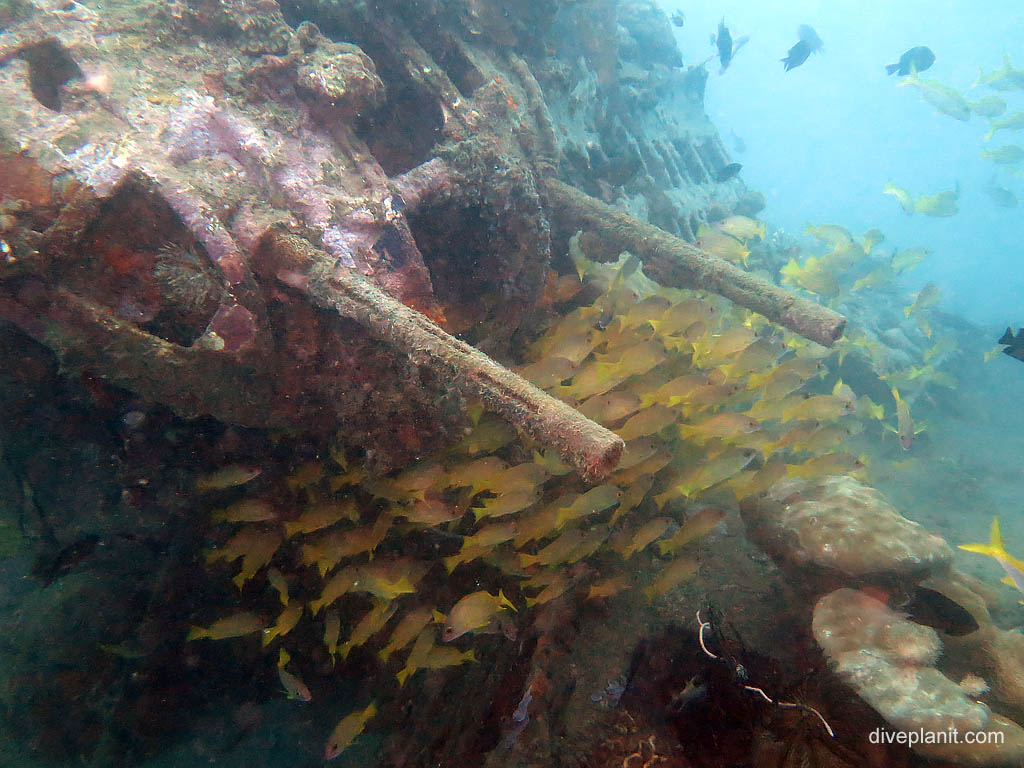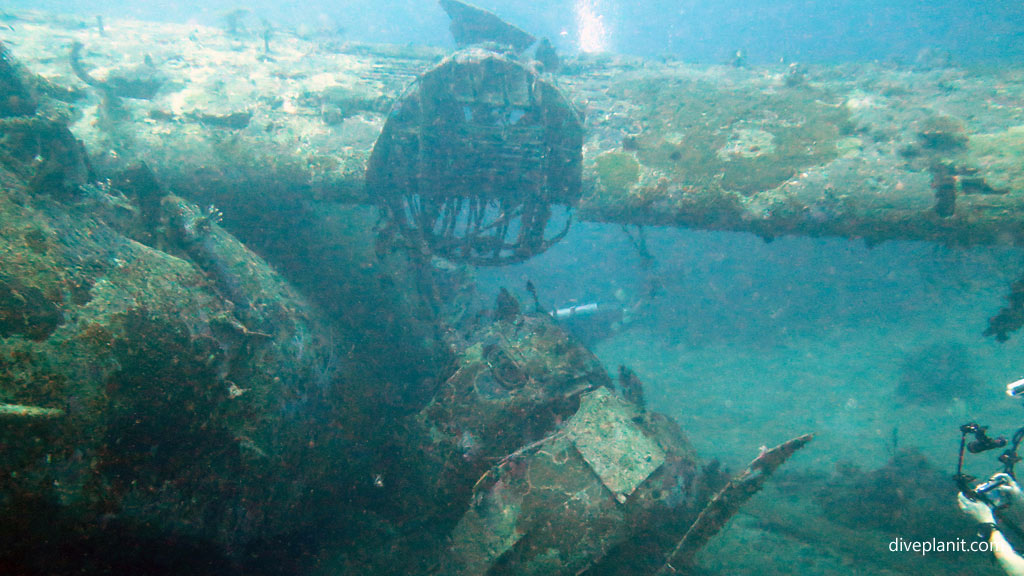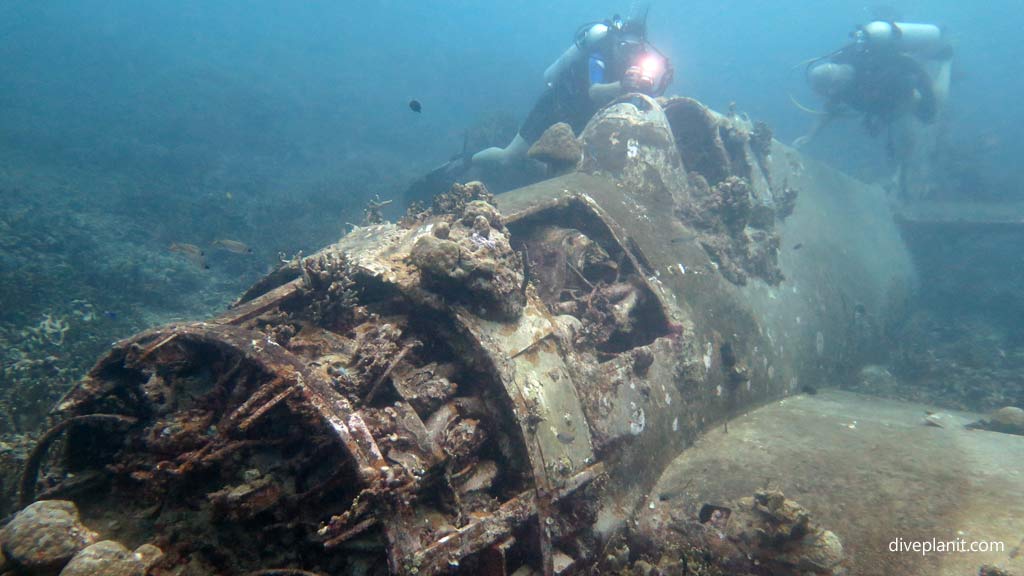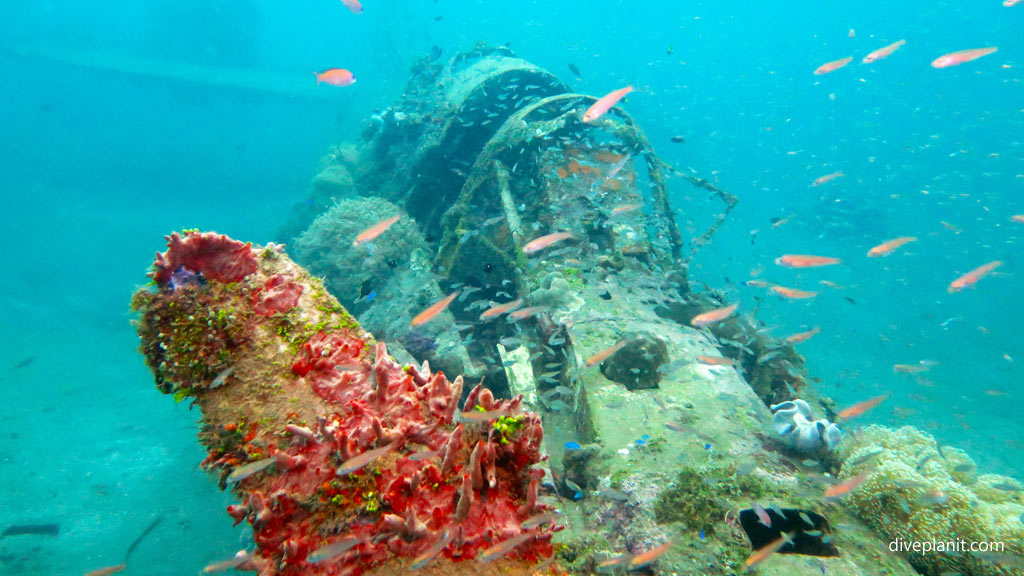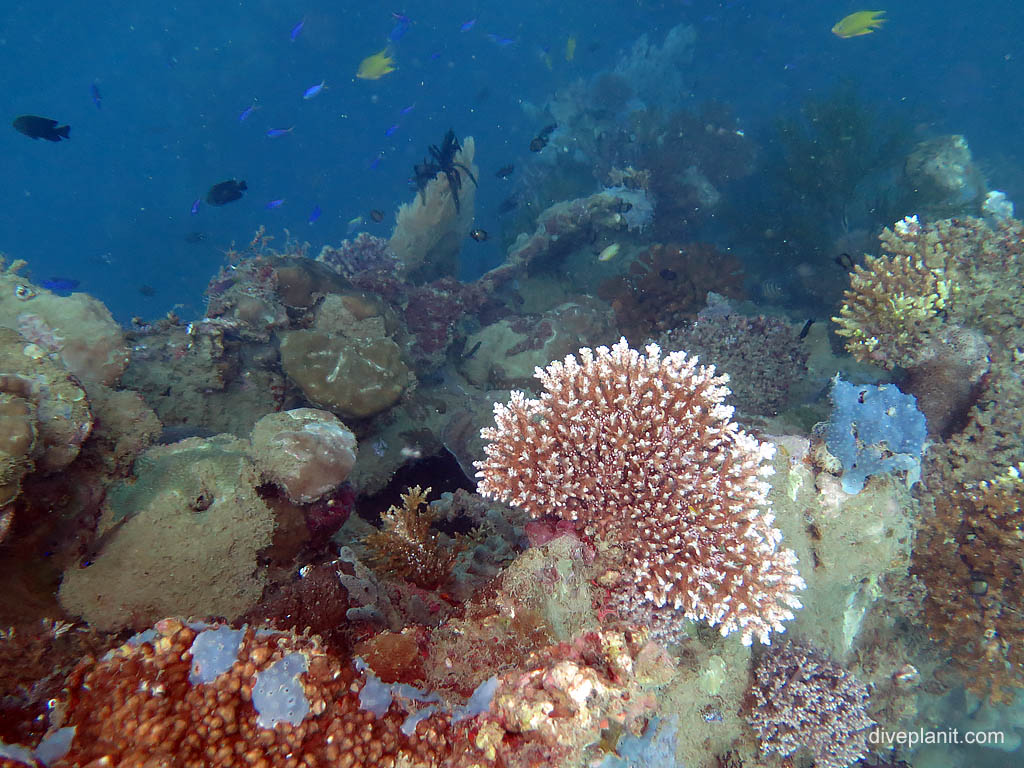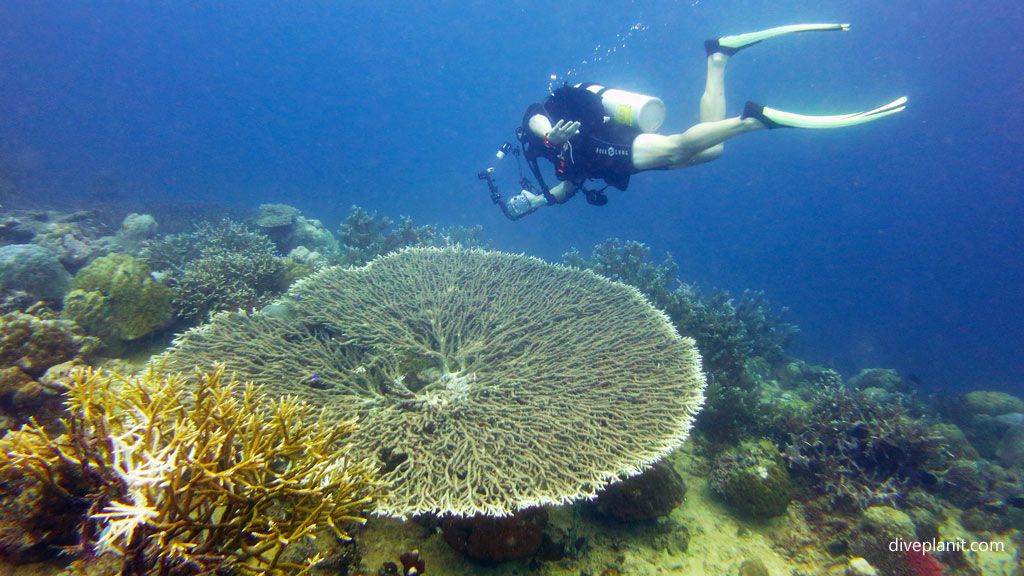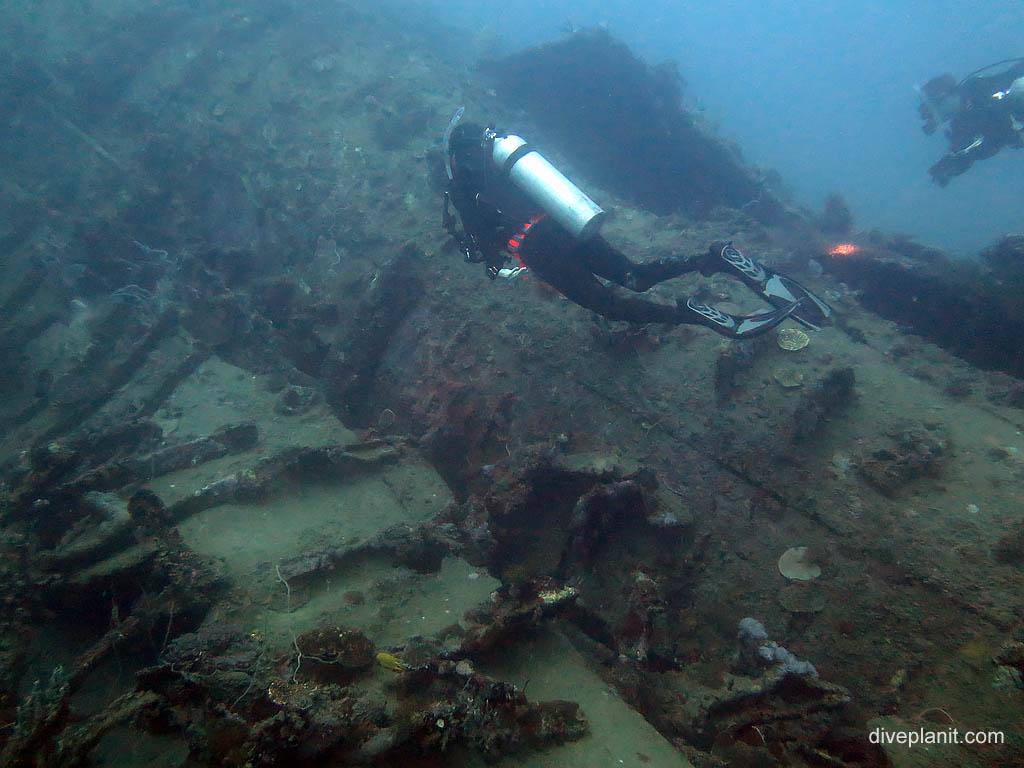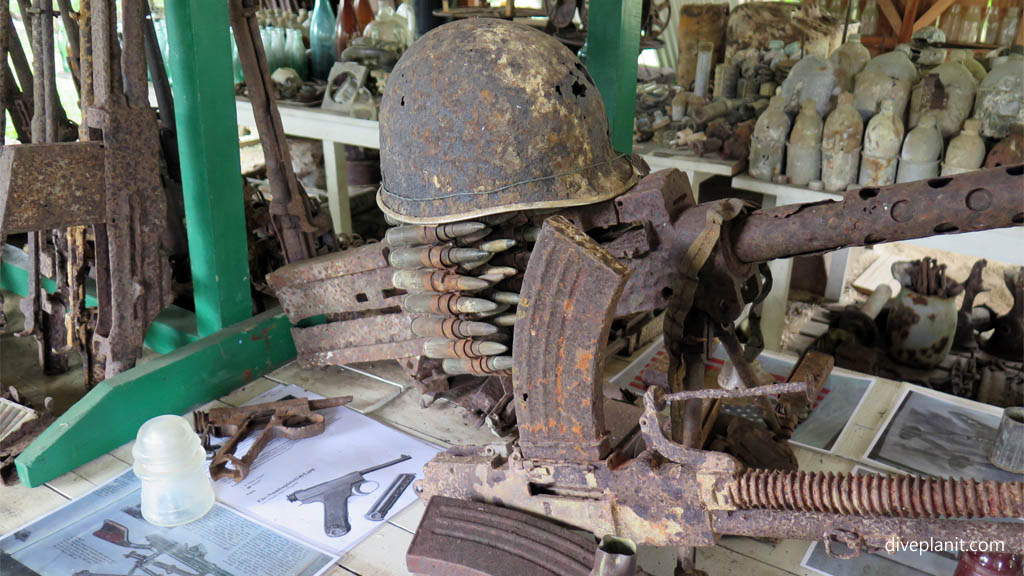The term ‘Wreck Diving’ often conjures up images of tough guys in full face masks and dry suits with enough trimix in about 6 tanks for a weekend sleepover at 80m.
In the Solomon Islands wreck diving is much more accessible and fun than that. There are airplane wrecks that you can ‘fly over’ at just 8m, submarine wrecks you can dive into, and wrecks of freighters so big that the hull looks just like a reef wall.
The Solomon Islands was the setting for the most prolonged military campaign in the Pacific theatre of World War II. A campaign that ran for over six months, with heavy casualties on both sides, along with over 60 ships and 1,200 aircraft ‘lost’.
Here are seven of our favourite wreck dive sites – all easily accessible to recreational divers – often in close proximity to really nice reefs as well.
1: B17 American (Flying Fortress) Bomber
Or possibly more accurately: the front parts of an American B17 Bomber – during a salvage attempt in January 1944, the tail section behind the ball-turret gun was broken off and dragged ashore. The remaining forward section of the plane – front fuselage, wings and what was once a cockpit – is almost still in one piece, with the top turret still intact on top of the wreck. You can dive it with Tulagi Dive.
2: Tulagi’s Catalina
This American Catalina sank rather unceremoniously in 1943 after hitting a small boat on the surface and now sits in 35m of water near Tulagi Island. The wreck was only discovered three years ago by the NZ Navy so she’s more or less intact, unlike other wrecks that have been pillaged over the years since the war ended.
3: The Hellcat
This F6F Hellcat was named “Betsy” after the pilot’s wife. It was ditched in January 1943, after being shot by a Japanese fighter pilot, in very shallow water off the coast of Kolombangara Island in Gizo. It now lies in less than 9m of water and is covered in soft and hard corals. You can dive it with Dive Gizo.
4: The Dauntless
The wreck of the Douglas SBD Dauntless, sits on a sandy bottom in the shallow waters of Rendova Lagoon near Munda. It’s covered with soft and hard corals and teeming with life. According to hearsay, the pilot, and the Japanese fighter who shot him down, reunited here for a dive and have remained in touch ever since. You can dive it with Dive Munda.
5: Bonegi 1: The Hirokawa Maru
The Hirokawa Maru was one of 11 Japanese transports attacked on their way to Guadalcanal on the 14 November 1942, bombarded from land and sea. The 156m long wreck was originally stranded upright ashore, but over time, weathering various storms and the odd earthquake, the ship now lies with the remains of her bow in about 5 m and her stern in 60 m, covered in hard and soft corals and teeming with life and easily accessed from the nearby beach not far from Honiara. Bonegi 2, the Kinugawa Maru lies nearby about 100m up the beach.
6: The Toa Maru
This massive wreck of a Japanese freighter is over 140m long and lays just 100m off shore near Gizo Island. It’s one of the largest most impressive wreck in the Solomon Islands. Some of its cargo still remains, including sake bottles, vials of medicine and a jar of condoms! Laid on its side, the port hull presents an extensive coral ‘reef’ where my dive buddy counted 20 different species of nudibranch!
7: I-1 Japanese Submarine
Royal New Zealand Navy corvettes HMNZS Moa and Kiwi sank the I-1 submarine, which is almost 100m long, in January 1942. The Kiwis dropped depth charges, which brought the sub to the surface and a battle between the three ships then ensued during which time the Kiwi rammed the I-1 three times. The I-1 eventually ran aground on the reef near the village of Tambea where it remains today.
Other Places of Interest
If you’re into WW2 artefacts generally, here are three other places you might like to visit.
Alfie’s Jeep which was salvaged from the jungle by local character, Alfie Rex Lay, who has lovingly restored it to working order, using parts also salvaged from the jungle on Munda. If you’re lucky, Alfie will take you for a ride in it.
Peter Joseph WWII Museum, Munda. The curator of this WWII museum, Barney Poulson, has been collecting memorabilia since 2002. The museum is named after his first find, dog tags belonging to one Corporal Peter Joseph. In fact there are piles of dog tags here, sitting among neatly ordered stacks of hand grenades, guns, bullets, Coke bottles and mess kits.
Vilu War Museum. A few kilometres west of Honiara this unassuming little outdoor museum has an impressive collection of wrecks and wartime memorabilia including American and Japanese planes and heavy artillery, neatly arranged in a beautifully landscaped garden.

